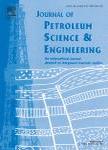版权所有:内蒙古大学图书馆 技术提供:维普资讯• 智图
内蒙古自治区呼和浩特市赛罕区大学西街235号 邮编: 010021

作者机构:Texas A&M Univ Harold Vance Dept Petr Engn Coll Engn College Stn TX 77843 USA Texas A&M Univ Coll Geosci Dept Geol & Geophys College Stn TX 77843 USA
出 版 物:《JOURNAL OF PETROLEUM SCIENCE AND ENGINEERING》 (石油科学和石油工程杂志)
年 卷 期:2022年第210卷第0期
页 面:109963-109963页
核心收录:
学科分类:0820[工学-石油与天然气工程] 08[工学]
基 金:U.S. Department of Energy, Office of Science, Office of Basic Energy Sciences, Chemical Sciences, Geosciences, and Biosciences Division [DE-SC0020675] U.S. Department of Energy (DOE) [DE-SC0020675] Funding Source: U.S. Department of Energy (DOE)
主 题:Machine learning Regression Wave propagation Mechanical discontinuity Discrete wavelet transform Signal processing
摘 要:Accurate detection and mapping of mechanical discontinuity in materials has widespread industrial and research applications. We developed a generalized machine-learning framework for visualizing single mechanical discontinuity embedded in material of any composition, velocity, density, porosity, and size with limited data. The proposed visualization of discontinuity requires accurate estimations of the length, location, and orientation of the embedded discontinuity by processing multipoint wave-transmission measurements. k-Wave simulator is used to create a large dataset of elastic waveforms recorded during multi-point wave-transmission measurements through materials containing single mechanical discontinuity. k-Wave simulator considers the wave attenuation, dispersion, and mode conversion in wave motion. Discrete wavelet transform (DWT) and statistical feature extraction are essential for data preprocessing prior to the data-driven model development. DWT also minimizes the effect of noise. Using hyper-parameter tuning and cross validation, gradient boosting regression can visualize the mechanical discontinuity with an accuracy of 0.85, in terms of coefficient of determination. A double-layered neural network-based regression has better performance with an accuracy of 0.95. Use of convolutional neural network converts the predictive task from a waveform processing to an image processing problem. Convolutional neural network achieved a generalization performance of 0.91. The proposed generalized workflow requires robust simulation of wave propagation, signal processing, feature engineering, and model evaluation. Sensors closest to the source and those located opposite the source are the most significant for the desired visualization. Notably, the sensors closest to the source capture the non-linear associations, whereas the sensor on the border opposite to the source capture the linear associations between the measured waveforms and the properties of the mechanical d